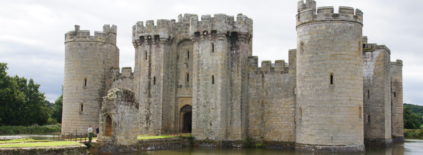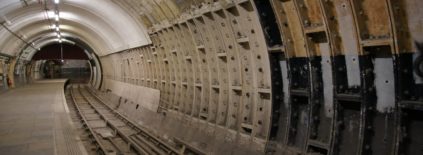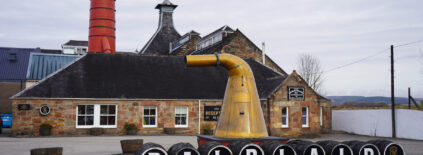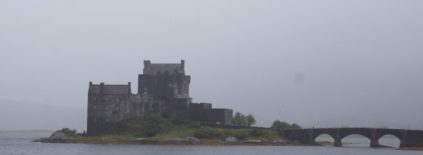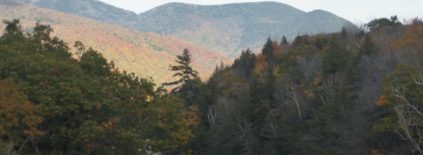Before I get started here I need to point out one critical element of travelling within the Chernobyl Exclusion Zone – you must be accompanied by a licensed guide at all times.
In other words.. you cannot partake in a self-guided tour within Chernobyl. The reasons are all safety-related – safety for exposure to the contamination in the Zone and also safety with regards to the nuclear site that still exists within the Zone.
How much time should you spend in the Exclusion Zone? The answer is up to you and what you want to see. The longer time you have in the Zone the more time you’ll have to see smaller sites and all the fine details between locations. I could have done an extra day but felt that the 2 Days we spent in the Zone covered a lot of ground.
Day 1 – Villages, Monuments & Duga Radar
The first day in the Chernobyl Exclusion Zone involved a variety of sites and villages that we stopped at. The eeriest of it all was surprisingly not the actual Power Plant but the site of the super-secret Duga Radar.
Summary of Day 1
- Leave Kyiv and drive to the Zone
- Arrive in the Zone and pass 1st Checkpoint
- Visited Zalesye Village (Supermarket, Town Hall, Soviet Car, Modern Home, Traditional Home)
- Visited several Monuments (Chernobyl’s City Sign, Statue of Lenin, Star of Wormwood Statue, Memory Lane)
- Lunch at the Hotel
- Visited First Responder’s Memorial outside the Fire Station
- Visited a “Children’s Garden” (Nursery) & WWII Memorial
- Visited the Chernobyl Power Plant (New Safe Containment, Stacks for Reactors 1-3, Construction on Reactors 5 & 6)
- Visited Chernobyl-2/Duga Radar Site (Radar, Computer Farm, Training Facility, Fire Station, Apartment Building, Hospital)
- Dinner and evening at the Hotel
Zalesye Village
Shortly after entering the Exclusion Zone we made a brief stop at a village. Zalesye Village is located at the edge of the Chernobyl Exclusion Zone, within the 30km perimeter. A walk through the village provided scenes of the cemetery (being tended to by family members, as it was shortly after Easter and they were granted leave to clean it up), a supermarket, a town hall, and several village homes.
Monuments in the Exclusion Zone
There are several monuments in the Exclusion Zone worth visiting. There is the Third Angel / Wormwood (not shown in the Gallery) sits just in front of a long path where each side is lined by names of the villages impacted by the disaster; on one side the village name was written on a white background, and on the other, it was written on a black background with a red line across it representing the evacuation. The village names were not only in Ukraine, but also covering those that were impacted just to the north in Belarus. The other key monument was the one designed in concrete to the First Responders and sits in front of the firehouse in Chernobyl. It was created in concrete as a nod to the substance used to help cover contaminated materials. And the sign marking the entrance to Chernobyl was unique; the atom – denoting nuclear power – at the top had been altered to show an unstable atom after the disaster.
Duga Radar
Within the Chernobyl Exclusion Zone there was a secret “object” and a small town (often referred to as “Chernobyl-2”) built around it. We had the opportunity to view the “object”, which was an extremely large over the horizon radar built by the Soviets. And we were able to explore the nearby buildings – a former computer farm, and training facility. Beyond those there was a set of six large apartment blocks that we could enter, and both a Fire station and hospital to explore. This base was evacuated before the city of Pripyat, and there had been hopes and expectations that after cleansing with boric acid that they would be able to return.
Day 2 – Pripyat
Summary of Day 2
- Passed Checkpoints for 10km and Pripyat
- Drove through the Red Forest
- Stopped at the Pripyat City Sign
- Entered Pripyat
- Visited the Swimming Pool Complex and School House
- Visited the Shoe Store, Stadium and Children’s Nursery
- Visited the Amusement Park and Recreation Center
- Visited the Main Square and Supermarket
- Visited the Police & Fire Stations
- Visited the River Side Cafe and Dock
- Visited the Cooling Tower for Reactor #5
- Lunch at the Hotel
- Visited with a Self Settler, Ivan Ivanovich
- Returned to Kyiv
The city of Pripyat remains within the Chernobyl Exclusion Zone as a ghost city where wildlife has reclaimed crumbling Tower blocks and the town square. It was a unique place to visit and unexpected in many ways as we wandered through this urban relic.
Swimming Pool & School House
The city of Pripyat was built in an effort to house workers of the growing Chernobyl Power Plant; which had originally been named for another city in the area. Given the ambition of expanding Chernobyl to contain 12 reactors, the city was built to scale quickly and efficiently to support this ambition. The Soviets built resources, like this Olympic size swimming pool, to tempt citizens to move to Pripyat.
Amusement Park
The most haunting of locations we came across during our visit to Pripyat and the entire Chernobyl Exclusion Zone was the Amusement Park. It was un-staged, sun-bleached, and overgrown but there was no denying what it had once been. The day after the disaster they had opened the Amusement Park to keep residents of Pripyat distracted from the ongoing battle at Reactor 4. The bright colours, though faded, remained cheerful against the sunny blue sky. For a moment it was almost easy to forget exactly why the Amusement Park was abandoned – but only for a moment.
Central Square & River Front
At first glance, it was very difficult to see the outline of the square through the overgrowth of trees that had reclaimed the space in the 30 years since the disaster. Several of these buildings surrounded the square and we spent time visiting the Recreation Center and Supermarket. The Recreation Center was complete with a pool (ice lingered on the surface), a Boxing ring (in what was once an orangery), and a large gymnasium space. The Supermarket still had signs hanging from it and at a glance, we could see shopping trolleys and refrigerator units tipped over on their sides. Further along from the Central Square was the River Front, where a beautiful cafe had once stood, and a riverboat had sat. The test of time had not been kind to either – the River Boat was submerged further down the shoreline where it had half sunk, and the beautiful stained glass in the Cafe had been broken and smashed in pieces over time.
Police & Fire Stations
First responders to the Chernobyl disaster started here in Pripyat, as it was the closest station to the plant. Almost nothing remains within the walls of the Fire Station, but a very faded Soviet star is painted on the door of the building, almost impossible to recognize due to time and wear. The Police Station remained standing, with a desk dragged outside and sat in front of the station. The windows were painted with various Soviet symbols that had faded over time. Upon entry, we found first the holding cell, painted with a cheery teal colour, and beyond that the actual cells and interrogation room. It was explained to us that the biggest deterrent for being taken to the jail was the loss of luxuries (such as childcare) to the family. Between the Police Station and Fire Station was a vehicle graveyard, where many that were restricted to the 30km zone were left to rot and fade.















































